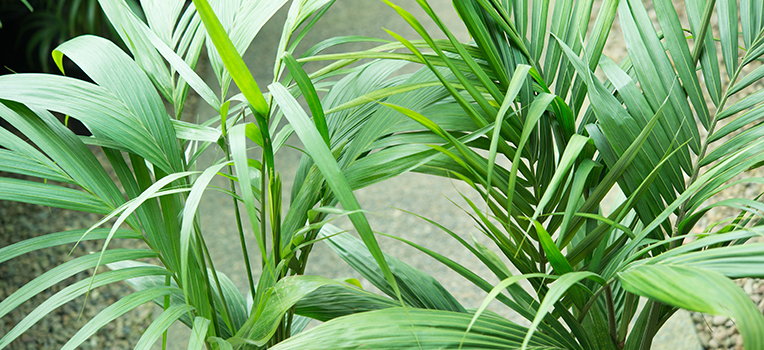Alexander palm
A little bit about the Alexander palm
This hardy, fast-growing native palm is happy as a potted ornamental plant or in the garden. Its lush green foliage features fronds with a silver under surface that catches the light, especially when the sun is low.
Botanical name: Archontophoenix Alexandere
Other names: Alex palm, king palm
Height: 10 – 24 metres Width: 2 – 4.5 metres
Ideal position: Likes full sun, however as a young plant that is still establishing, it prefers shade.
Suitable spots: Grows well in the garden and in a pot outdoors.
Flowers: Large creamy-white flowers and small red fruits appear from the base of the crown shaft, mostly in autumn.
Caring tips
PREPARE
Start by digging through Flower Power’s Supersoil Composted Cow Manure. The key to establishing a lush, happy palm (especially in autumn and winter) is to keep its roots warm with layers of mulch and manure. Palms love organic matter, so for best results, mulch with enriched cow manure, tea tree mulch or Organic Active 8 Soil Improver and Planting Mix.
FEED
Fertilise fortnightly from spring to autumn with Nitrosol Liquid Blood and Bone. As your palm gets bigger, give it organic, slow-release fertiliser like Dinofert Concentrated Organic Fertiliser Pellets.
WATER
The Alexander palm likes to be kept moist, especially while it’s getting established. But once established, keep it dry in winter and moist in summer.
PRUNE
The Alexander palm is self-cleaning, so you can put your feet up and relax.
PROTECT
The Alexander palm can suffer from plant scale. To combat this, spray with PestOil or eco-oil, but keep in mind, scale is a sign that your palm is nutritionally deficient, so make sure to also feed and mulch your palm. Palm dart is a butterfly that likes to munch on palm trees. You can keep it away using a caterpillar spray, such as Success ULTRA.
If you find your Alexander palm is look unhealthy after planting, bear in mind it can take up to a year for an Alexander palm to establish itself and start looking healthy again. In that time, don't give up on it - just keep it well watered and give it regular feeds of Seasol. It will soon bounce back.

